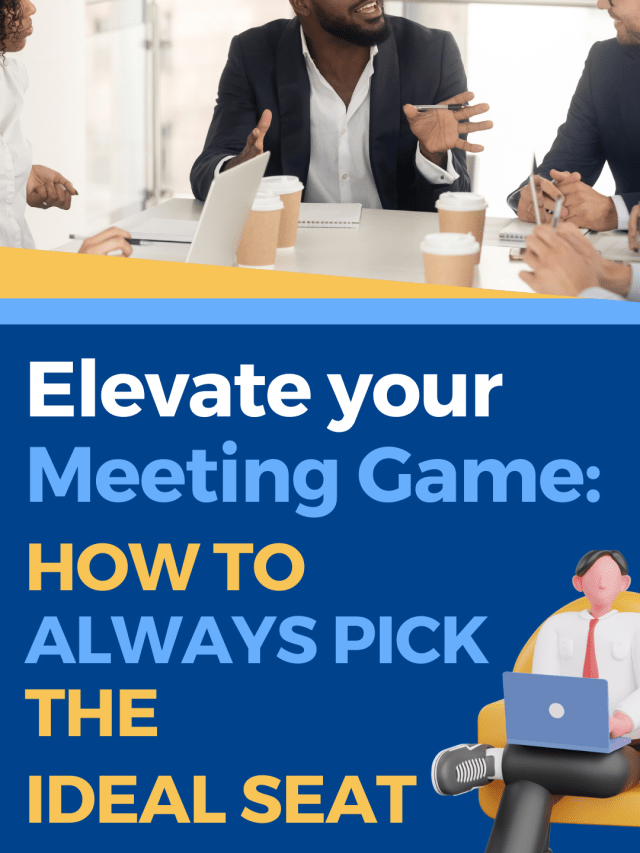This is the ultimate guide to conference table seating arrangement and how to pick the perfect seat in a meeting.
There is a psychology to seating—and it is super helpful to have in your back pocket for any type of room you might walk into.
In this guide, you will learn:
- Why the type of table you sit at MATTERS (hint: it changes your behavior)
- How to pick the perfect seat in ANY meeting (and avoid the bad ones!)
- The best ways to organize your own meeting (with 11 seating arrangements)
Now before I tell you the science… let’s see how good your psychology of sitting is! Watch the video to play the seating game:
For example, if you walked into a conference room with this table…where would you sit?
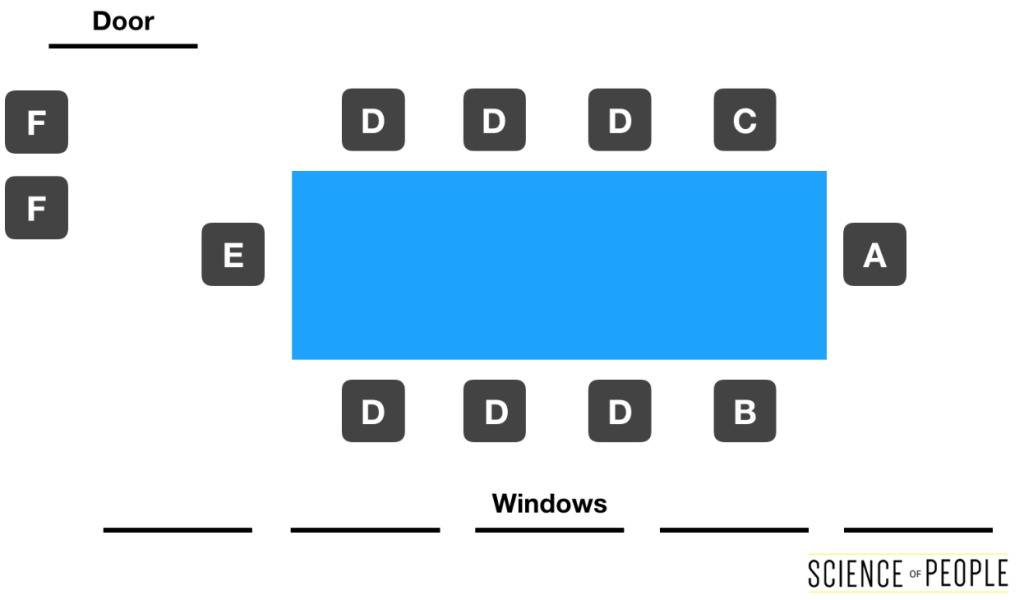
In this guide, I’ll give you my formula to pick the perfect seat.
If you’re looking for the perfect place to sit in a meeting room (Part 1 is for you) or want to plan out your own seat arrangement for a meeting (check out Part 2), you’ll love this new guide.
Part 1: Finding the Perfect Seat
You walk into a conference room and you are faced with a HUGE decision…
- What’s the best seat?
- Should I sit near the boss?
- Where in the world should I sit?!
Where you sit in a meeting matters WAY more than you think! And science has some great tips for us on where to sit at a conference table and how to optimize our seating choices.
The Outstanding Science of Sitting
Believe it or not, there is a psychology of where you sit—and it matters! Environmental psychologist Robert Sommer was actually the first to find that where we sit in a meeting greatly affects several things:
- People’s perceptions of you—how do you mark your territory?
- Your feelings toward others and what is being said in the meeting—do you feel included or excluded?
- The status of your relationships to others in the room—how close are you seated to the boss?
And here’s where it gets real interesting…researchers actually found that the shape of your table can affect how you make decisions! Here’s what they did:
- A total of 350 participants were asked to sit down in one of seven chairs, arranged in various formations, and evaluate advertisements and photos.
- Participants who sat in a circle reacted more favorably to images that showed groups of friends or family members, and conveyed a sense of belonging.
- If participants sat in rectangular or square formations, they prefered ads portraying go-getters and cutthroats.
In other words—
“The shape of a seating arrangement has a predictive impact on persuasion.” -UBC School of Business
Circle formations allow better eye contact and equality, while rectangular or square formations lead to more individualistic meetings that can be controlled by the Power Player (more on that later). It’s no wonder Donald Trump has a rectangular table on his show, “The Apprentice.”
Are you ready? Grab a seat, sit down, and let’s get ready for business! Here’s how to pick the perfect place to sit in a meeting.
Step #1: Know Your Seating Game Plan
Here is a graphic of a typical conference room:

Position A: The Power Player
This seat usually is reserved for the boss, the VIP or the person leading the meeting. This is especially true if a projector screen is behind them.
Positions B & C: The Allies
The people sitting right next to the boss usually are seen as the most supportive of the Power Player. This may or may not actually be the case. However, it is handy to be able to whisper things in the boss’s ear. You also are more likely to be heard by the boss if the group is talking all at once. Dr. Richard Winters of the Mayo Clinic, who also is a professional and executive coach for healthcare leaders, calls these the flanking positions:
“When you sit in this position you can influence the flow of the meeting by assisting. You can draw attention towards or away from topics. You can prompt a speeding up or slowing down of the agenda.” — Dr. Richard Winters
What’s the difference between B and C? Read on…
Position D: The Middles
The middles are going to get less eye contact and less floor time simply because of the nature of a boardroom table. This can be a good place to go into stealth mode. If you have no choice and have to sit in the middle, be prepared to speak up if you want to be heard.
Insider Tip: If you lean forward and raise your hand slightly, you can garner eye contact and attention if you want to add an important comment.
Position E: The Contender
If you are sitting opposite your boss, you better have a lot to say. Typically, when we are facing off with someone, we feel more contrarian toward them. Be keenly aware of this if you end up in this seat.
- If you want to be the Contender — be ready to speak and address the Power Player directly.
- If you do not want to be the Contender — but are forced into this seat — be more verbally and non-verbally supportive. To counteract your seat, smile more, nod more, and give more supportive feedback.
Insider Tip: Sometimes if two people are running a meeting, they take both ends of the table. This is a great way to physically show a balanced viewpoint, with info coming from both sides.
Position F: Sideliners
Need to sneak out early? Don’t want to be heard? Aren’t a Power Player just yet? Then the sideline is for you. This can be near the door — especially if you have to leave — or as an assistant behind the boss.
Step #2: Find Your Goal or Mode
What’s your goal or mode in a meeting? Dr. Winters has found that people typically either want to be seen and heard, or don’t. I have found we are trying to balance two behaviors in a meeting:
- Attention Mode: I want to talk a lot. I want to be heard. I want to be noticed.
- Stealth Mode: I want to talk less. I don’t want to be noticed. I may even want to hide.
Neither of these are wrong, but it’s important to be purposeful. Stealth Mode can be great for listening in a meeting where you don’t have much to contribute to the agenda. Attention Mode can be great if you want to be noticed by the boss and take a leadership role.
Bottom Line: You should know your goal or mode before going into the room. This will help you make the best seating decision.
Step #3: Practically Speaking
Ask yourself these questions:
- Do I have to pee a lot?
- Do I have to leave early?
- Is there a chance I might get an urgent call from a client?
- Will I want a coffee refill?
These questions seem small, but they aren’t when you have to take that walk of shame out of a meeting. Before you plop down in a chair, think about your plan of action and if you *might* need to get up at any point.
Nothing is worse in a meeting than when you are about to make an important point and someone is crawling over chairs to get to the bathroom.
Bottom Line: Don’t be THAT person. If you might have to leave, be a sideliner–position F or D, near the door.
Step #4: The Big B
Who’s the Big B? Your boss! The decision maker! The big cheese … I guess that would be the big C. Anywhoos, your VIP should affect your seating choice. Before you decide, you should know your goals. The science is pretty clear here. Research from Cornell University found that:
The closer you are to someone physically, the closer you feel to them.
In other words, the closer you sit to your boss the stronger their perception of empathy. Closeness is not the only issue to consider. You also want to think about line of sight. If you have a lot to say to your boss or will be presenting considerably, you might consider being opposite them — so you are in their direct line of sight. This position comes with some risks, but might be a good strategic choice if you want to make an impact.
Bottom Line: Use the boss as a compass.
Step #5: Sides Matter
This is my favorite piece of science for this whole article! Should you sit to the right or left of a Power Player? Science is clear:
If you want to be heard, sit to the left of a Power Player. If you want to be unnoticed, sit to the right of a Power Player.
This is true in business and even teaching!
“One study found that teachers kind of ignore students who sit to their right, and students who sit to the left generally perform better and are called on more. The same holds true in business: Research shows more deals are made when you sit to the left of a potential client.” –Joan Raymond, former teacher, principal and superintendent
Bottom Line: The best choices for Attention Mode are A, B and E. The best choices for Stealth Mode are D, F and C.
Step #6: Be a Seating Pro
If you want to be the master of perfect seating, I have a few tips for you:
- Take Note: Typically, people take the same seats over and over again. Pay attention to where your boss normally sits. Pay attention to where the biggest talker usually sits — do you want to be able to see them more easily, hear them more easily or be far away from them entirely?
- Arrive Early: I would rather come to an empty room than a full room and be stuck with the Contrarian seat or a sideliner seat.
- No Head Chair: Sometimes you get into a room and the conference table has no head chair. This was likely an attempt to equalize the room. No worries! In this case, the positions shift slightly, where the Power Player usually is assumed to be the middle of the sides:

Step #7: But What About a Circle?!
Circular tables are great! If I have a choice, I always want a circular table because it’s easier for everyone to collaborate. The only issue with circular tables is that the Power Player — if there is one — dictates the new seating positions. The Contrarian is always opposite the Power Player, Allies are always to the left and right, and Middles fill in the rest.
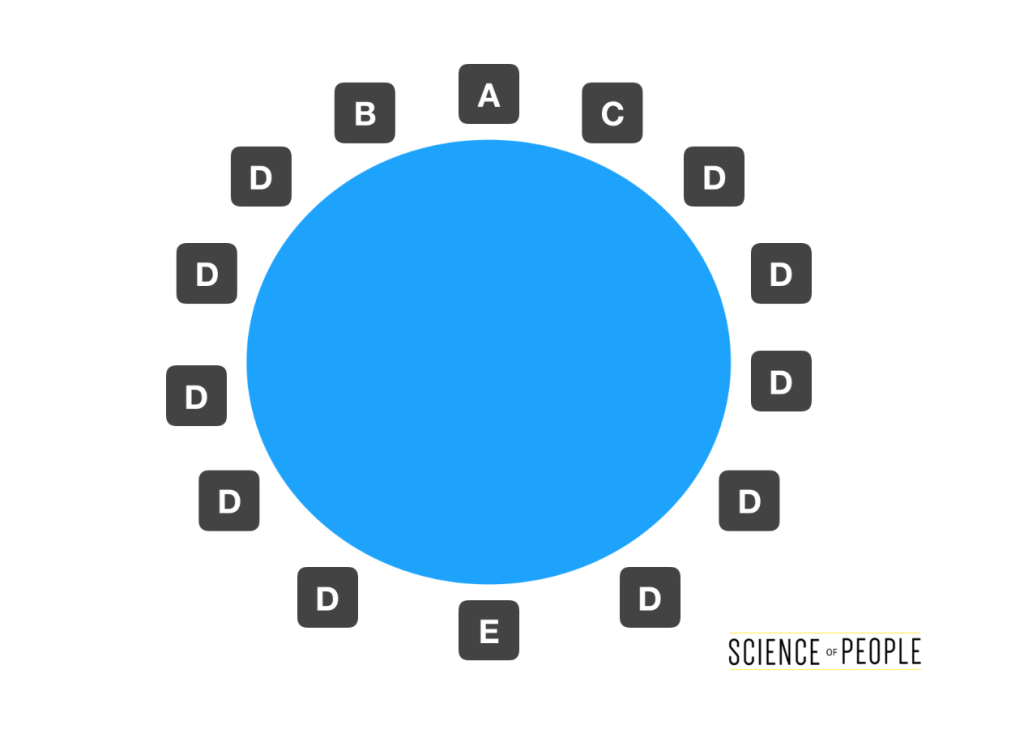
What seat do you choose? Whichever one you end up with, choose wisely! Your seat matters more than you think.
Step #8: My Super-Special Seat-Sleuthing Tips
Yay for alliteration! Okay. So, these are truly my expert-level tips and they are only if you really want to be serious. Here’s what to keep in mind.
Watch our video below to learn how to choose the best seat in a meeting:
Be the Greeter
I always, always try to get a chair facing the door. Why? I get to smile and greet people as they walk in. This is an amazing way to make a first impression if you have not met someone before and a great way to project authority and warmth as people walk in.
Presentations Change the Game
If the meeting includes a slide presentation, that can change the game a bit. You might want to choose the chair with the best view of the slides and presenter. This is because your comfort and ability to see the presentation might be more important than your position around the table — especially if the presentation won’t have much discussion.
Couch, Chair, or Swivel?
Not all seats are created equal. It’s not just about conference tables! In a typical office you might have multiple chair choices. Let’s dissect them:
- The Low Sofa: Beware of that couch! I know it looks super comfy, but there are two problems. One, it might be way lower than your business counterpart. This often gives a person the feeling of inequality—even subconsciously. Second, it’s hard to get in and out of it. If you are in a skirt, beware! I only choose a low sofa or couch if my counterpart is also sitting on the couch next to me or on another one across from me.
- The Swivel Chair: I love swivel chairs around big conference room tables. They’re great for easily making eye contact. However, if you are jittery or like to rock in your chair—do NOT choose the swivel chair, or else plant yourself in one place if you have to use one. Constant motion can make you look out of control and distracted.
- Pillows & Props: Psychologically, we like to have no barriers between us and another person. Be careful of placing pillows, laptops, or clipboards in front of you at a meeting. You do not want to accidentally block someone.
The Best Seat in the House
Given all this science, you should be confident enough to make your own choices! But as a default, my favorite seat in the house is usually the highest chair with the best view of the room.
Remember: whatever your seating strategies, choose wisely! The best seat in the house is the one that matches you and your goals. Now let’s see how you can make the best out of your seating arrangement if you are planning an event.
Part 2: How to Organize Conference Table Seating as an Event Planner
Picture this: you have a big meeting coming up. One of your first big questions should be on seating arrangements:
- What is the best seating etiquette?
- Is there an ideal business seating arrangement?
- Does seating matter?
First things first. Seating matters!
There are so many different kinds of seating arrangements that it’s hard to get it right.
Watch our video below to learn the ideal seating arrangement for your meeting:
Why is Seating Arrangement Important?
Seating arrangement can change the entire tone of your event, meeting, or get-together. The right seating arrangement can help people collaborate efficiently together, or increase bonding between people.
It’s important to get your seating arrangement right for the specific event you are planning! Before we get into the 11 different seating arrangements, here are a few of my favorite tips:
Seating Tip #1: Goal-Oriented Seating
You should know what your goal is before setting up seating for a meeting. Remember, circles are great for collaboration AND retention, while rectangular formations are great for competitiveness and displays of power.
Teacher Tip: Research has found that students are more engaged and may retain more learning when the classroom is not set up lecture-style, but instead has clusters of students at small tables, or the entire class sitting in a circle.
Make your seats match your goals.
- If you want to be close, choose closer chairs.
- If you want to be collaborative, sit next to each other or in a circle.
- If you have a big room, check out the eleven basic styles of seating (coming up soon) and choose the one that is right for you.
Seating Tip #2: Shape + Distance = Success
The formation of the seating arrangement and the type of chair are not the only things that matter for successful seating. Distance between participants is also important!
- The closer you are to someone, the closer you feel. This study found that sitting closer to someone increases our feelings of empathy.
- Aisle or middle? Researchers at Northwestern University found that when people are seated in a row, those in the center were more likely to claim their fair share for solving problems, while valuing the contribution of their neighbors, while it was much harder for people on the ends to feel included.
- Co-ops and Corners: When collaborating with someone, I love sitting next to each other to look at paperwork or a computer screen. Alternatively, both of us sitting on the corners next to each other works, too!
Bottom Line: As an event planner, you should take into account the distance of chairs as well as if people can see each other. If we can see one another, we are more likely to understand and recognize each other. If we are close to one another, we are more likely to empathize with each other.
Seating Tip #3: Optimize Your Office
All of these tips aren’t meant just to help you choose the right seat. They are also for you to set up easy seating choices. Here’s a few tips to make it easy on your guests and colleagues:
- Chairs should be equal. Don’t have a couch with a low settee and a few high chairs. Everyone will be at different heights and different comfort levels.
- Remove Props. No pillows–people either grab them or have trouble sitting around them. The only worthwhile prop is a small bowl of candy or mints — keep that blood sugar up!
- Maximize Eye Contact: Make sure people can see each other from every seat in your office. If you have chairs along a back wall, people in those seats will feel left out. Give everyone equal seating opportunities!
Got your seating arrangement goal in mind? Perfect! Now let’s take a look at how you can set up your perfect seating arrangement.
11 Seating Arrangements Used for Events
Staging Connections put together a great overview of 11 different kinds of seating arrangements for your meeting. They have kindly allowed us to share them with you here:
#1: Theatre
Positives:
- All of the seats are facing forwards towards the front of the function room.
- Maximum seated capacity is achieved for the function room.
Negatives:
- The audience is closed in, needing to push past other audience members to enter/exit the seating area.
- Aisles are required to ensure sufficient access to seating area.
- There is no provision for note taking or consumption of plated food and beverage.
- Audience interaction is hindered as audience members don’t face each other.
This set-up is popular for meetings and product launches.
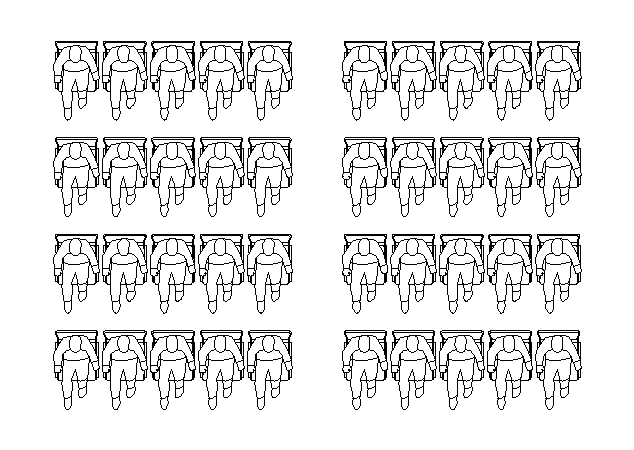
#2 Classroom
This style reflects the seating found in a school or lecture theatre, with chairs and trestle tables aligned in consecutive straight rows.
Positives:
- All of the seats are facing forwards towards the front of the function room.
- Allows for note taking and consumption of plated food and beverage.
Negatives:
- Again, the audience is closed in, making it difficult for audience members to enter or exit.
- Aisles are required to ensure sufficient access to seating area.
- Seating capacity is reduced by the trestle tables.
- Audience is less likely to interact as they are not facing each other.
This set-up is popular for training, conference style seating, sales kick-offs and product launches.
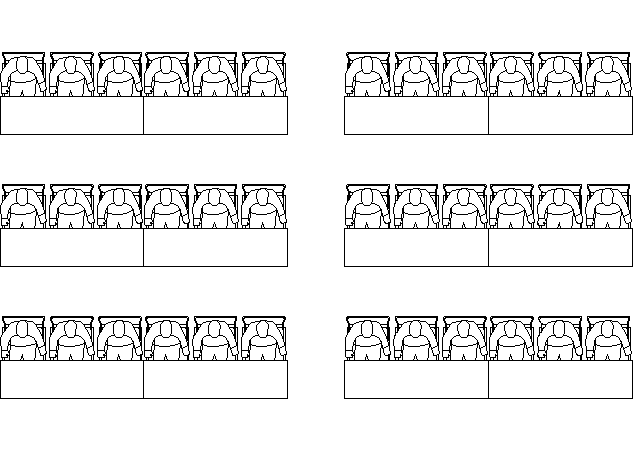
#3 Herringbone
This style is very similar to Classroom, however each consecutive row of chairs and tables are angled inwards.
Positives:
- All of the seats are angled inward towards the podium.
- All of the seats are facing forwards towards the front of the function room.
- Allows for note taking and consumption of plated food and beverage.
Negatives:
- Again, the audience is closed in, making it difficult for audience members to enter or exit.
- Aisles are required to ensure sufficient access to seating area.
- Seating capacity is reduced by the trestle tables.
- Audience is less likely to interact as they are not facing each other.
This set-up is popular for training, conferences, lectures.
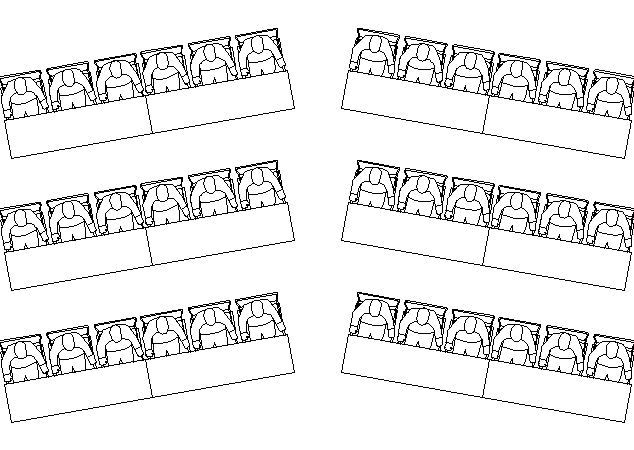
#4 U Shape
As the name suggests this style is in the shape of the letter U, with the tables & chairs arranged in an open-ended configuration with the audience facing inwards.
Positives:
- The open end allows for a focal point or presentation area.
- It allows the presenter to approach and engage with each audience member.
- Audience interaction is enhanced, with audience members facing each other.
Negatives:
- Inefficient use of floor space, with seating capacity reduced.
- A large proportion of the audience are seated side-on to the presentation area.
This set-up is popular for training, conferences, workshops, meetings.
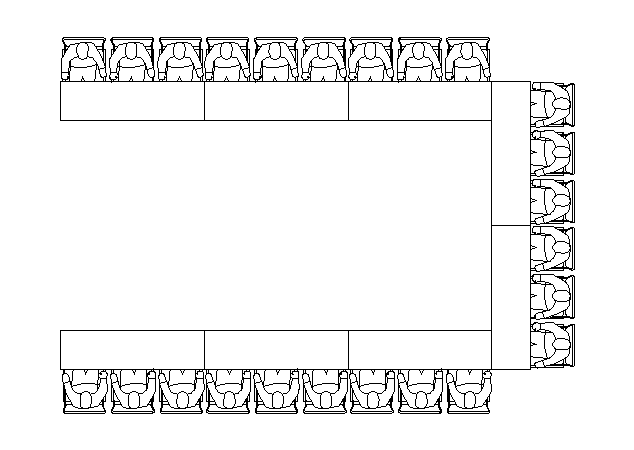
#5 Horseshoe
This style is very similar to U Shape, however there are no tables, only chairs arranged in an open-ended configuration with the audience facing inwards.
Positives:
- The open end provides a focal point and allows for a presentation area.
- Allows presenter to approach and engage with each audience member.
Negatives:
- Inefficient use of floor space, with seating capacity reduced.
- Aisles are required to ensure sufficient access and egress to seating area.
- There is no provision for note taking or consumption of plated food and beverage.
This set-up is popular for large meetings, presentations and team briefings.
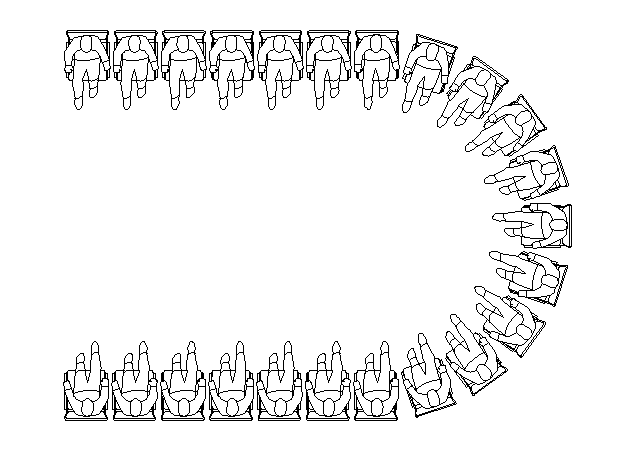
#6 Hollow Square
This style is similar to U Shape, however there are four sides and no open end, with the audience all facing inwards.
Positives:
- Audience interaction fully enhanced, with audience members all facing each other.
- Allows audience to consume plated food and beverage easily.
Negatives:
- Seating capacity is reduced
- Does not allow for a main presentation area or focal point.
This set-up is popular for discussions.
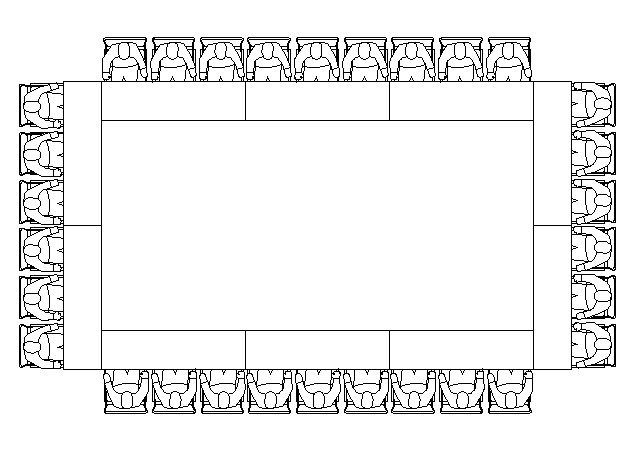
#7 Boardroom
This style is a smaller version of the Hollow Square or U Shape, however there is a large elongated table, with the audience all facing inwards.
Positives:
- Encourages audience interaction as they all face inwards.
Negatives:
- Restricts the position of a presentation area or focal point, typically to the end of the table
This set-up is popular for small meetings, one-on-one interviews, small presentations, and team briefings.
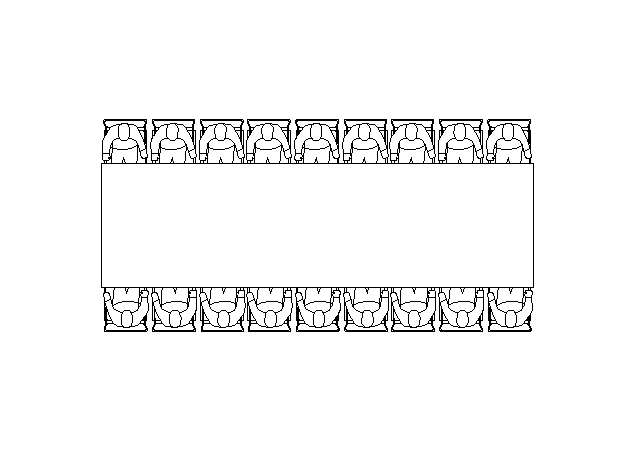
#8 Banquet
This style is similar to a round dinner table, with the audience seated around the circumference facing inwards.
Positives:
- Audience interaction fully enhanced, with audience members all facing each other.
Negatives:
- The audience is closed in, needing to push past other audience members to enter/exit the seating area.
This set-up is popular for gala dinners, awards night, Christmas parties, weddings and other informal events.
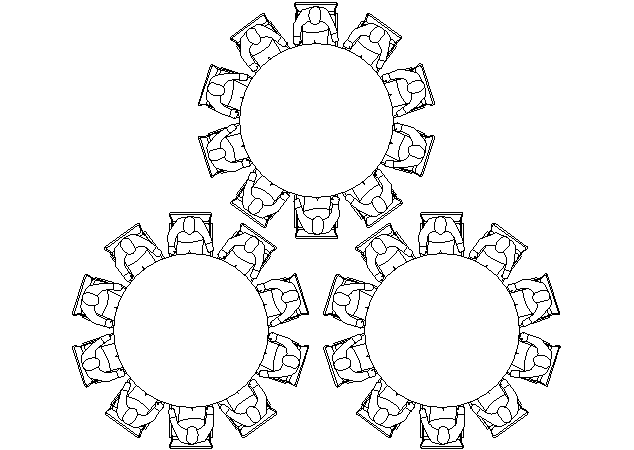
#9 Cabaret
This style is similar to Banquet style, however there is an open end, with the audience seated in an arc facing forwards.
Positives:
- The open end allows for a focal point or presentation area.
Negatives:
- Inefficient use of floor space, with seating capacity reduced.
This set-up is popular with meetings such as training sessions, awards nights and gala dinners.
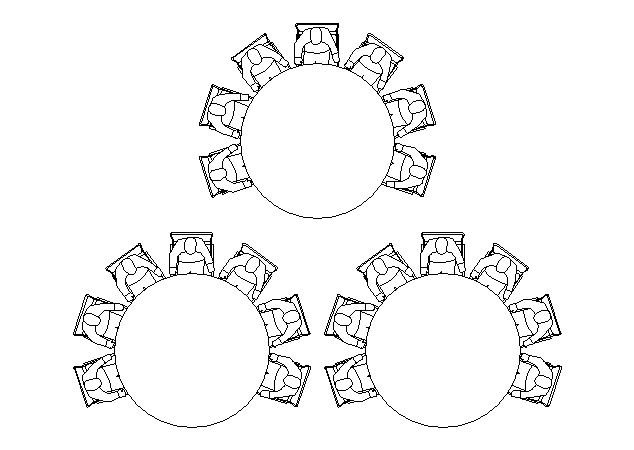
#10 Cocktail
This style is unlike any others with no chairs or tables. It is literally standing space.
Positives:
- Most efficient use of floor space, with maximum room capacity available.
- Audience interaction greatly enhanced, with audience members able to freely mingle and roam.
Negatives:
- Audience is standing with no opportunity to sit and rest.
- Does not allow for note taking or consumption of plated food and beverage.
This set-up is popular for cocktail parties, weddings, Christmas parties and other social events.
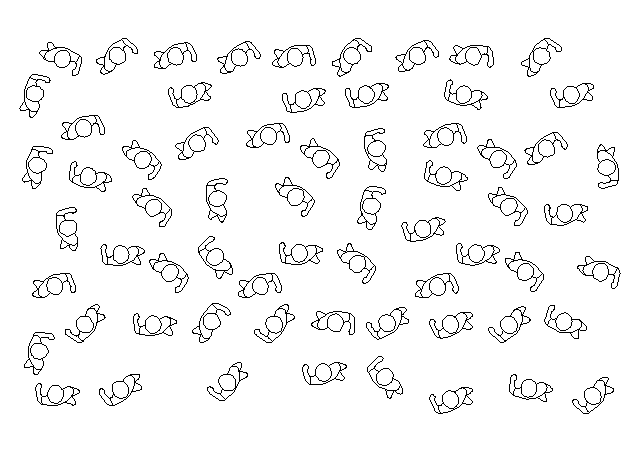
#11 Lounge Zone
To refresh the formal vibe and encourage networking, event planners are opting to include a new seating arrangement in their mix – introducing the Lounge Zone. Add sofas, chairs, coffee tables, bar tables and ottomans in clusters to form this creative space.
Positives:
- Great for encouraging networking and giving attendees an informal seating area to relax and mingle.
- Can be used to create a sense of space within a larger venue space and the style / type of furnishings can be used to enhance your event’s theme.
Negatives:
- Some venues don’t have the space to allow for a lounge zone.
- A relaxed, styled area may not suit all event types.
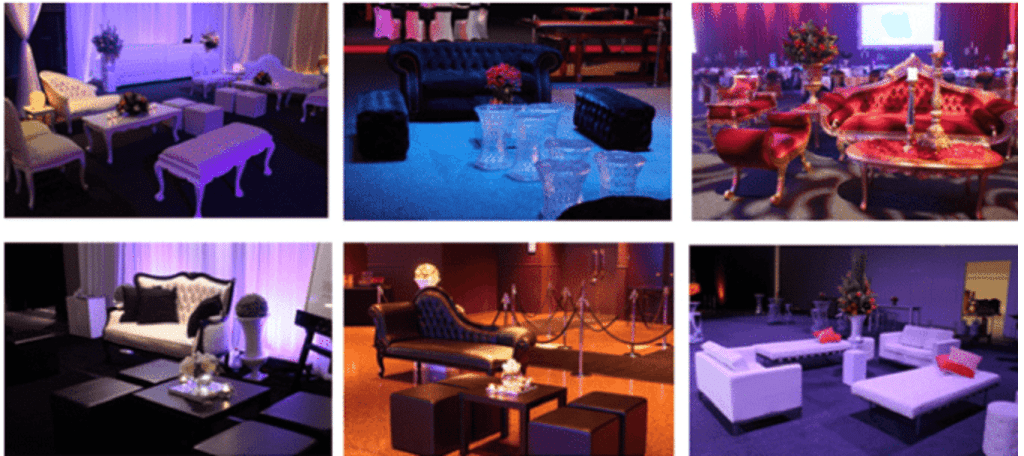
So there you have it—the Ultimate Guide on Seating at ANY meeting. My goal is to remove any and all barriers or awkwardness you might experience. You might also like:
Where to stand at a networking event

